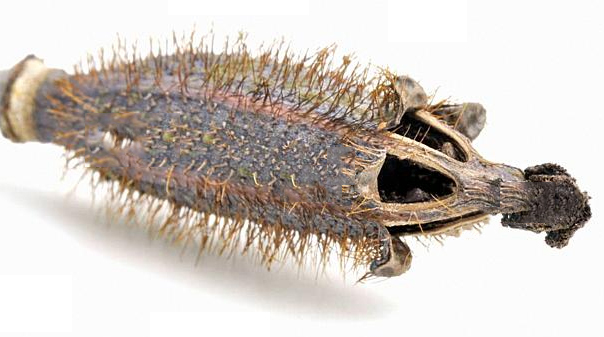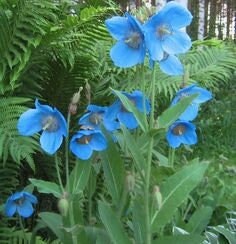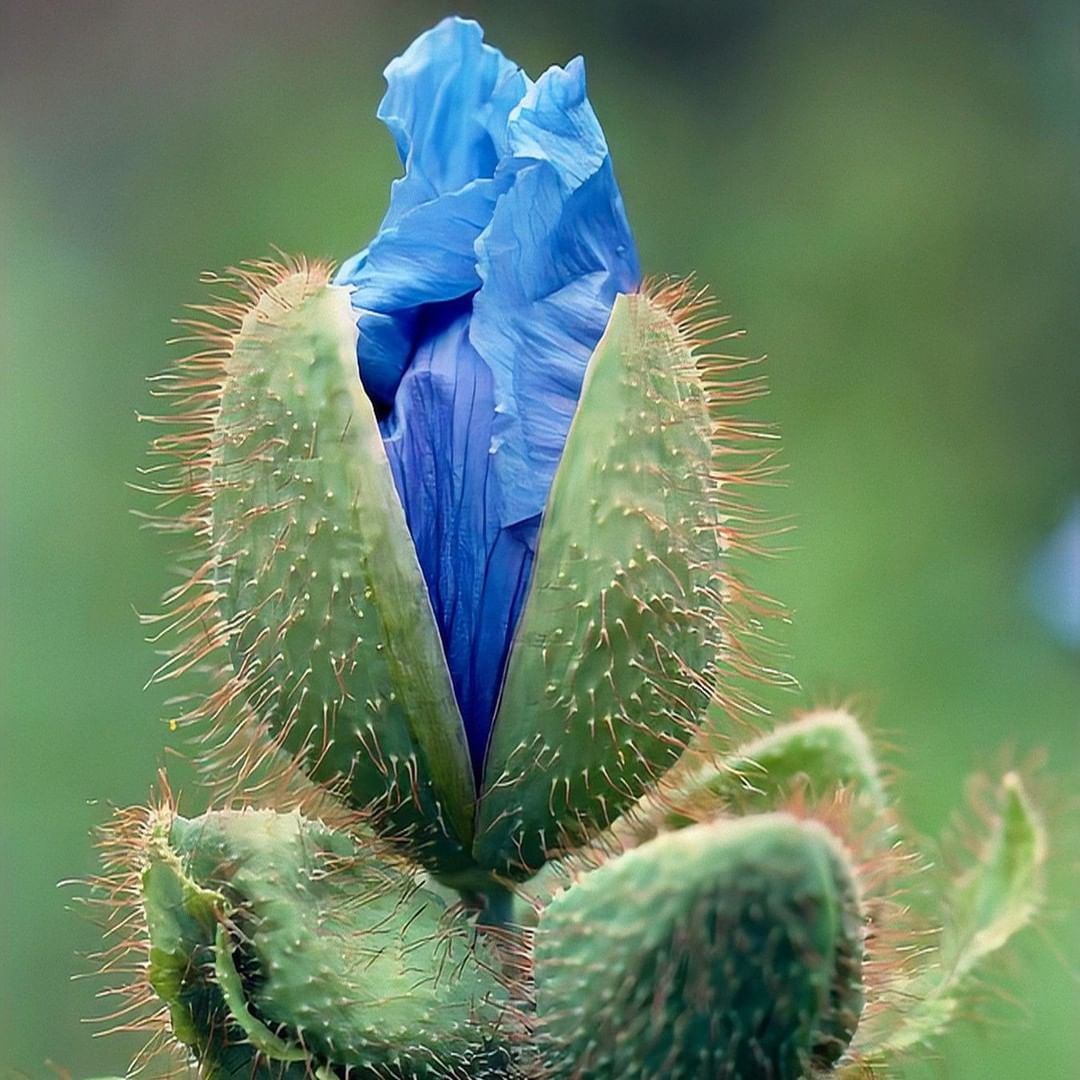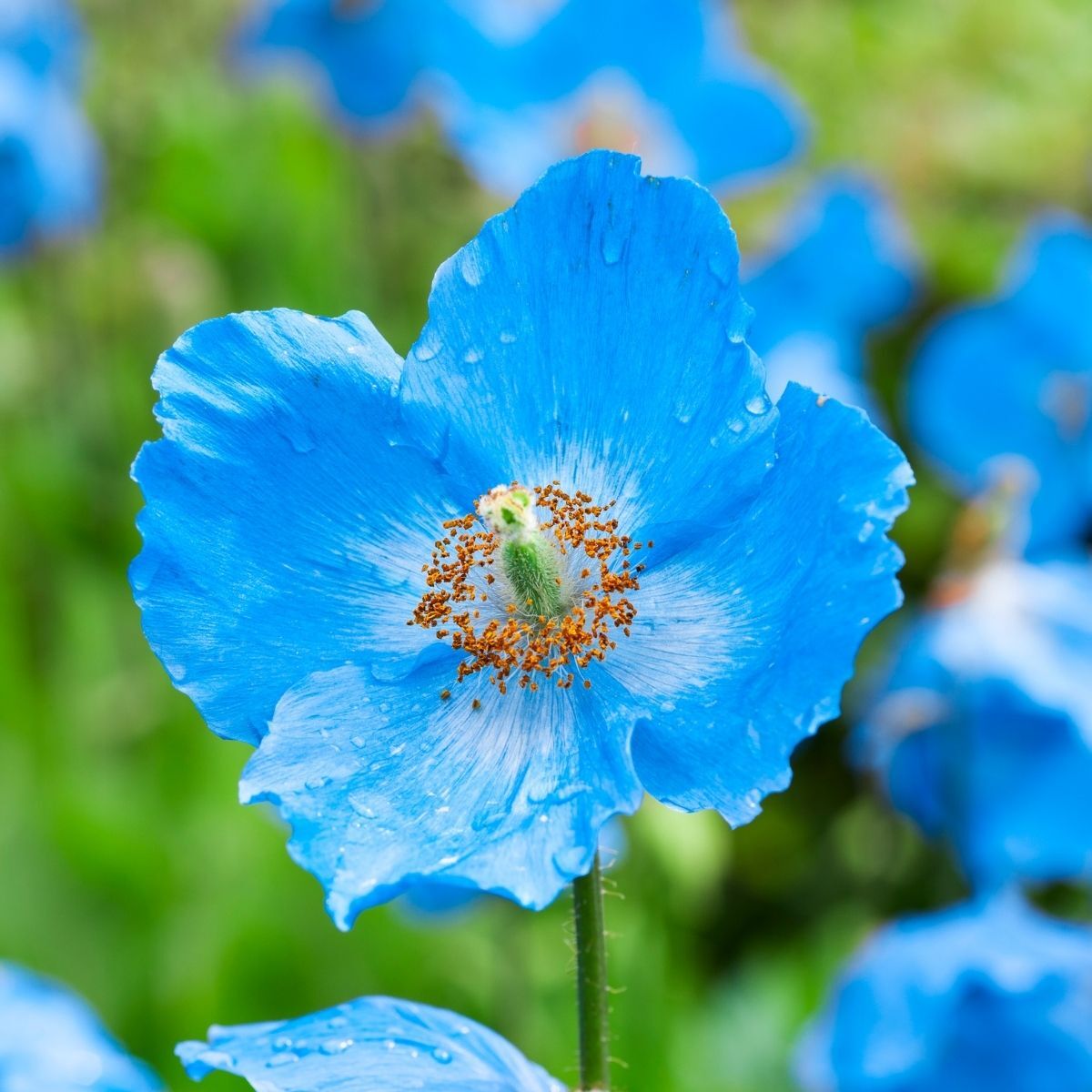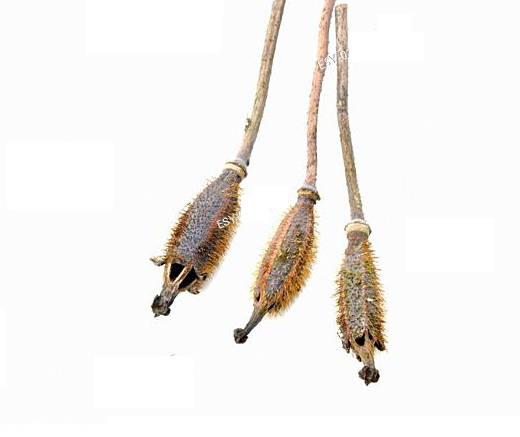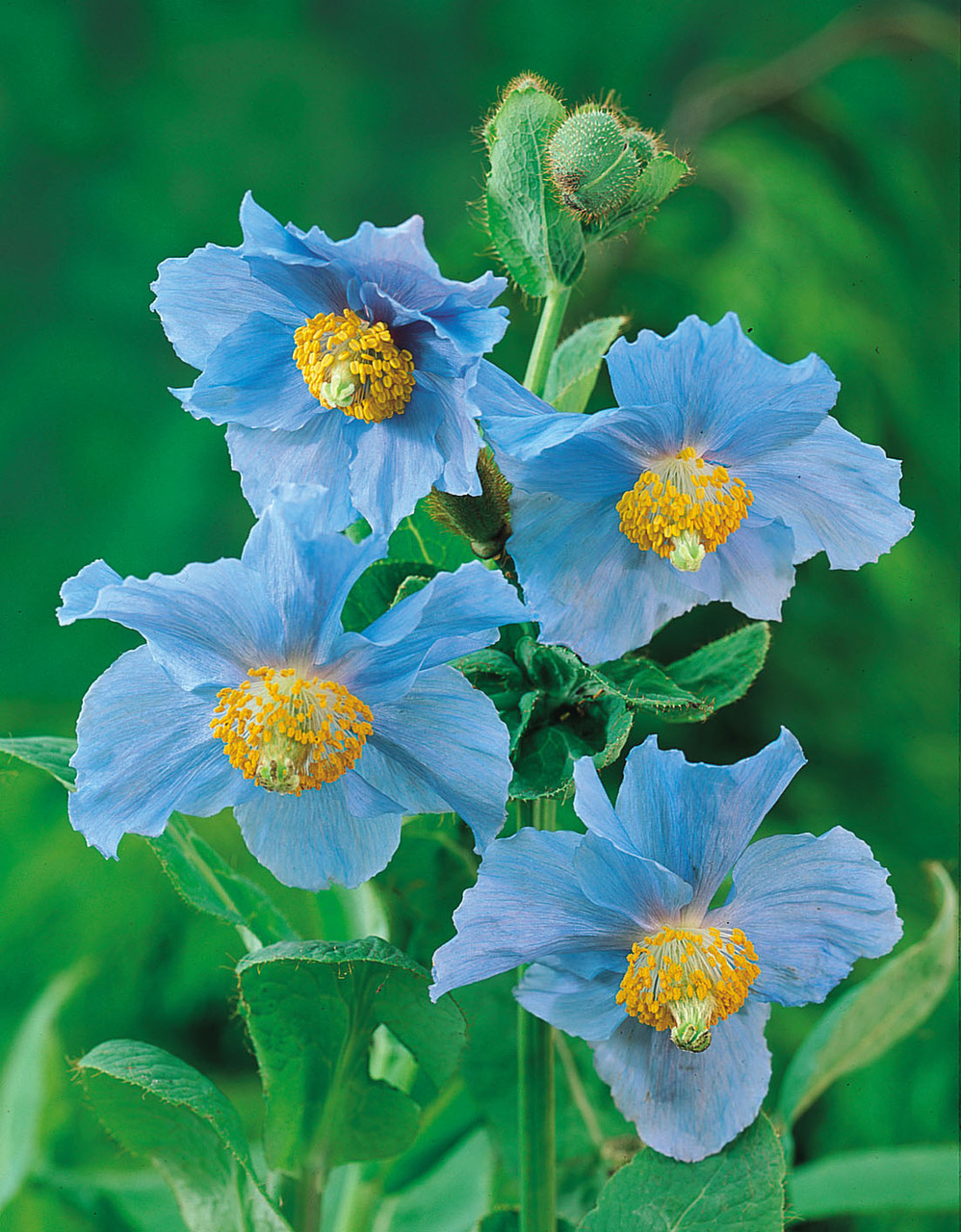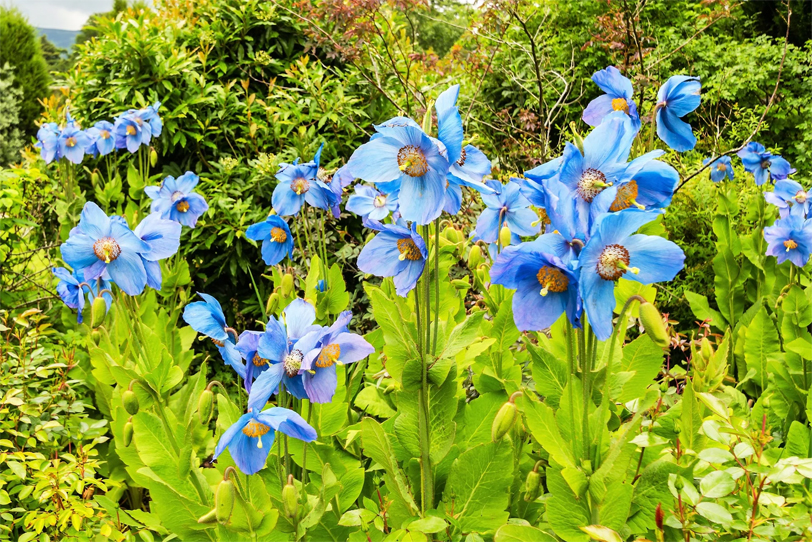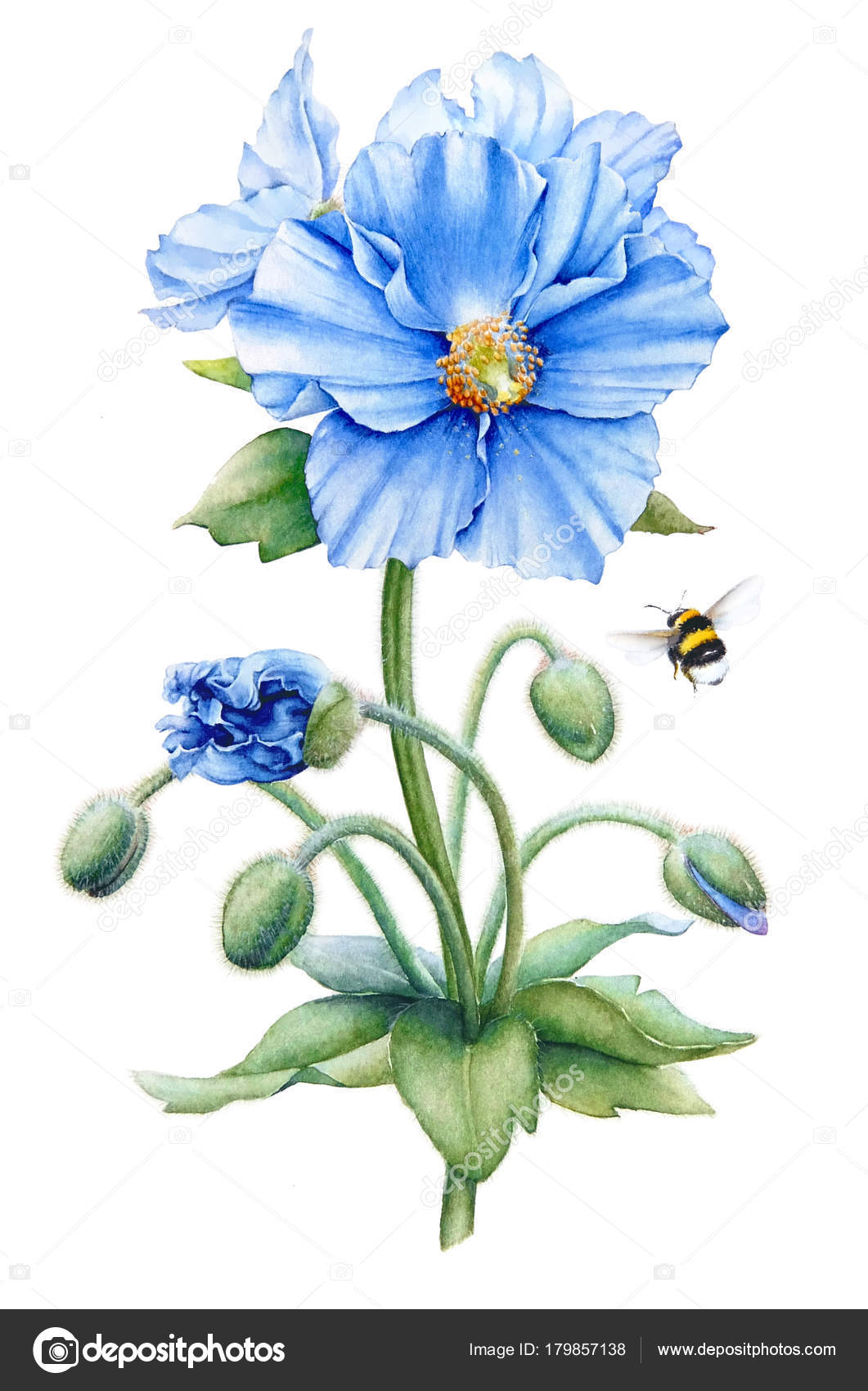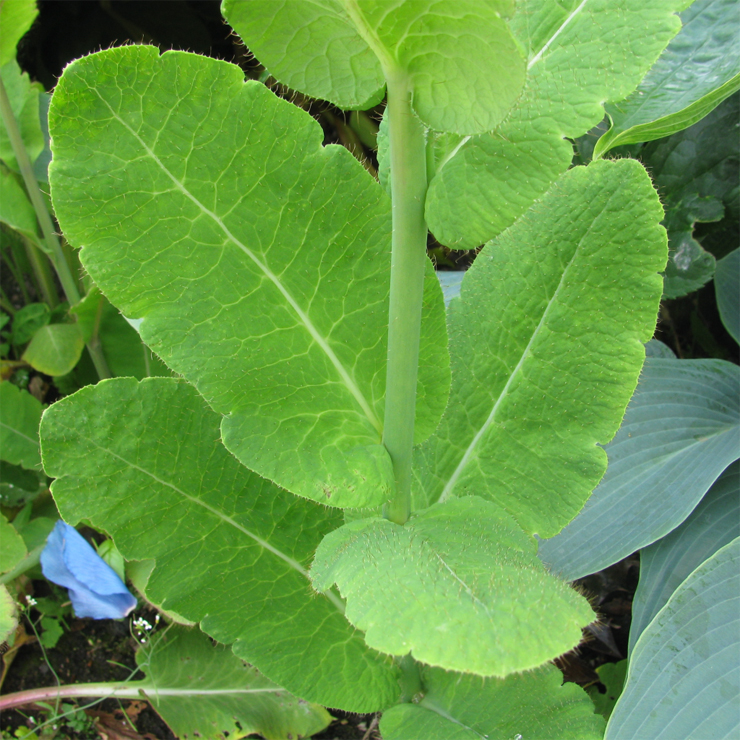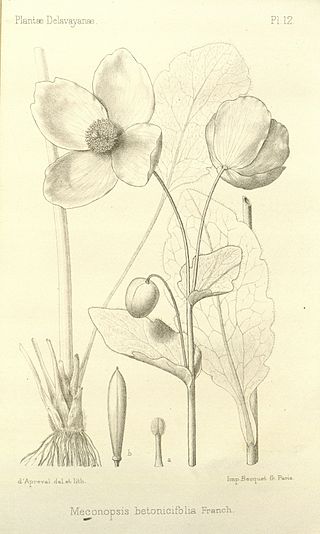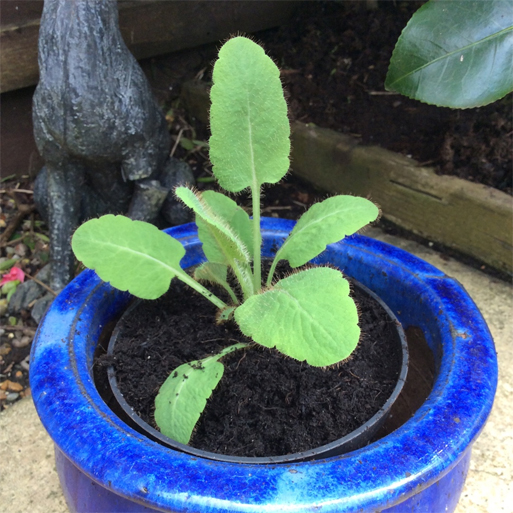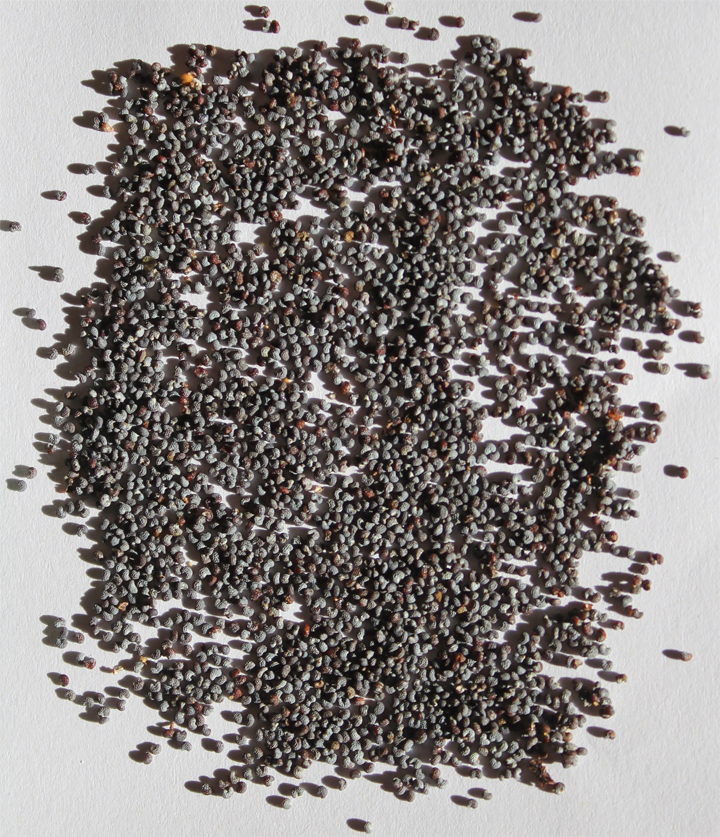The word “Meconopsis” comes from the Greek words “mekon,” which means “poppies,” and “opsis,” which means “like.” In this case, “Meconopsis” means “looking like a poppy.” This name fits because Meconopsis plants, like M. betonicifolia, have beautiful flowers that look like poppies and are often called “Himalayan poppies” or “blue poppies.” The name “betonicifolia” comes from the Latin words “betonica,” which means “betony,” which is a type of grass, and “folius,” which means “leaf.” This plant’s name comes from the fact that its leaves look like those of the herb betony. A lot of people think that Himalayan Blue Poppy Flowers are very mystical. People think that these flowers stand for peace, unity, and tranquility. For this reason, the flower leaves’ beautiful blue color makes people think of the peaceful blue sky.
Himalayan Blue Poppy Facts
| Himalayan blue poppy Quick Facts | |
|---|---|
| Name: | Himalayan blue poppy |
| Scientific Name: | Meconopsis betonicifolia |
| Origin | Tibet, Bhutan, and the Sichuan and Yunnan provinces of China |
| Colors | Initially green turning to brown as they mature |
| Shapes | Dry, dehiscent capsule, typically ovoid or ellipsoid in shape |
| Taste | Do not have any significant taste |
| Major nutrients | • Water • Cellulose and Fiber • Phytochemicals • Alkaloids |
| Health benefits | Skin Health, Aesthetic and Psychological Benefits, Potential Anti-Cancer Properties, Respiratory Health, Liver Health, Wound Healing, Stress Reduction, Mood Enhancement, Pain Relief |
| Name | Himalayan blue poppy |
|---|---|
| Scientific Name | Meconopsis betonicifolia |
| Native | Eastern Himalayan region, specifically in parts of Tibet, Bhutan, and the Sichuan and Yunnan provinces of China |
| Common Names | Himalayan blue poppy, Himalayan perennial poppy, Himalayan queen, Blue poppy, Blue treasure of the Himalayas, Blue enchantress poppy, Nepal poppy, Himalayan poppy, Himalayan blue-flowered poppy, Blue celestial poppy, Himalayan sapphire, Bhutanese sapphire poppy, Blue Himalayan poppy, Himalayan gem, Blue Tibetan poppy, Bhutan blue poppy, Tibetan poppy, True blue poppy |
| Name in Other Languages | Afrikaans: Himalayan blou papawer Amharic: Himalayawi semyawi fiqireña (ህማላይያው ሰማያዊ ፍቅረኛ) Angami: Tsumvi-miinyu Arabic: Alkhafashiat alzraqa’ alhimlayaia (الخفاشية الزرقاء الهملاياية) Armenian: Himalayakan kapuyt mtsun (Հիմալայական կապույտ մածուն) Assamese: Himalayi Blu Popi (হিমালয়ী ব্লু পপি) Azerbaijani: Himalaya mavi qarağatı Basque: Himalaiako urdindari, Himalaiako urdin pabea Bengali: Himalaya Nil Popi (হিমালয় নীল পপি), Himalaya Blue Popi (হিমালয় ব্লু পপি), Nil Oparajita (নীল অপরাজিতা) Bodo: Himalay Nil Popi (হিমালয় নীল পপি), Himalayniyilal-phaphi Bulgarian: Himalayska sínya makyanka (Хималайска синя макянка) Burmese: Himalaya Nhnihnak Myatkyi Hkyinhk (ဟီမောလယ်နှင့် မတ်ကြီးခြင်း) Catalan: Abundància blava de l’Himàlaia, Papaver blau de l’Himàlaia Chhattisgarhi: Himalayan Blue Poppi (हिमालयन ब्लू पॉपी) Chinese: Xǐmǎlāyǎ lán yīngsù (喜马拉雅蓝罂粟), Huo xiang ye lü rong hao, Lán yīngsù (蓝罂粟) Croatian: Himalajska plava maka, Himalajska plava makovnica Czech: Himalájský modřenec, Modrá violka himálajská Danish: Himalayablåvalmue, Himalaya blå kornblomst, Blå valmuesøster, Tibets blå valmue Dimasa: Himalayan Blue Popi Dogri: Himalayan Blue Poppi (हिमालयन ब्लू पॉपी) Dutch: Himalayaanse blauwe klaproos, schijnpapaver English: Bailey’s blue-poppy, Himalayan blue-poppy, Himalayan-poppy, Blue-poppy, Betony-leaved meconopsis, Tibetan Blue Poppy, Bailey’s blue-poppy Estonian: Himaalaja sinilill, Himaalaja sinine magun Finnish: Himalajan siniunikko, Himalajan sinikurjenpolvi, Sinivaleunikko French: Pavot bleu de l’Himalaya, Pavot bleu, Pavot bleu , Pavot à fleur bleue, Pavot d’Himalaya, Pavot bleu de l’Himalaya, Pavot de l’Himalaya, coquelicot bleu de l’Himalaya, pavot bleu du Tibet Galician: Amorodo azul do Himalaia, Himalaia amapola azul Garhwali: Himalayan Blue Poppy (हिमालयन ब्लू पॉपी) Garo: Himalayan Blue Poppy Georgian: Himalaisuri lurji makvari (ჰიმალაისური ლურჯი მაკვარი) German: Himalaya-Mohn, Tibet-Scheinmoh, Scheinmohn, blauer Scheinmohn Greek: Vounoskiáda himalaías (Βουνοσκιάδα ημαλαΐας), Vounoskiáda tou Imaaláiou (Βουνοσκιάδα του Ιμαλάιου) Gujarati: Himalaya Nīla Popī (હિમાલય નીલ પોપી), Himalayan Blue Popi (હિમાલયન બ્લ્યુ પોપી) Hausa: Himalayan blue poppy, Himalaya taurari taurari Hebrew: Perakh hahehimalaya hakahol (פרח ההימליה הכחול) Hindi: Himalayan Blue Poppy (हिमालयन ब्ल्यू पॉपी) Hungarian: Himalájai kék mák, Himalája kék mályvarózsa Icelandic: Blár blóm Himalaja, Himalaya blár valhnetta Igbo: Himalayan poppy odo Irish: Plúr gorm Himiléach, Popaí Ghorm na Himalái Italian: Papavero blu dell’Himalaya Japanese: Himaraia burū popī (ヒマラヤブルーポピー) Kannada: Himalaya Neeli Gida (ಹಿಮಾಲಯ ನೀಲಿ ಗಿಡ), Himalayan Blue Papi (ಹಿಮಾಲಯನ್ ಬ್ಲೂ ಪಾಪಿ) Karbi: Himalayan Blue Popi Kashmiri: Himalayan Neelam Chho (ہمالیائی نیلم چھو) Kazakh: Himalay kök jasıl (Гималай көк жасыл) Khasi: Syiem lyngkot Khond: Himalayan Neel Popi (ହିମାଲୟନ୍ ନୀଲ ପପି) Kokborok: Himalay Nil Popi (হিমালয় নীল পপি) Konkani: Himalayan Blue Poppy (हिमालयन ब्लू पॉपी) Korean: Himalaya Paran Yanggwibi (히말라야 파란 양귀비), Himallaya beullu popi (히말라야 블루 포피) Kumaoni: Himalayan Blue Poppy (हिमालयन ब्लू पॉपी) Kurdish: Popaûkaşoka Spî ya Himalaya Kurukh: Himalayan Blue Poppy (हिमालयन ब्ल्यू पॉपी) Kutchi: Himalayan Blue Poppy (હિમાલયન બ્લ્યુ પોપી) Kyrgyz: Himalay kök janğırtıq (Гималаи көк жаңгыртык) Ladakhi: Bingchub Stonpa (བིང་ཆུབ་སྟོན་པ) Latvian: Himalaju zilais magoneklis Lithuanian: Himalajinis mėlynoji maca, Himalajinė mėlynoji magunkė Lushai: Hnamdil Maithili: Himalayan Nil Pappi (हिमालयन नील पप्पी) Malay: Bunga Himalaya biru, Popi Biru Himalaya, Himalaya Bunga Biru Malayalam: Himalaya Neelapoo (ഹിമാലയ നീലപൂവ്), Himalayan Blue Poppi (ഹിമാലയൻ ബ്ലൂ പോപ്പി), mekkonopsis bettonisipholiya (മെക്കോനോപ്സിസ് ബെറ്റോണിസിഫോളിയ) Manipuri: Himalay Nil Popi (হিমালয় নীল পপি) Marathi: Himalaya Niḷā Popaṭa (हिमालय निळा पोपट), Himalayan Blue Popi (हिमालयन ब्ल्यू पॉपी) Mizo: Hnamdil Nagpuri: Himalayan Blue Poppy (हिमालयन ब्ल्यू पॉपी) Nepali: Himalaya Nilo Popi (हिमालय निलो पोपी) Mongolian: Khimalain shar mandal (Хималайн шар мандал) Norwegian: Himalayablåvalmue, Himalaya blå valmueblomst, Blå valmuesøster Odia: Himalaya Blu Popi (ହିମାଲୟ ବ୍ଲ୍ୟୁ ପପି) Pashto: Himalayi Neelmgapopi (همالوي نيلمګاپوپي) Persian: Gol asmani Himalaya (گل اسمانی هیمالیا) Polish: Maki himalajskie, Himalajski błękitny mak, Mak himalajski niebieski, mekonops bukwicolistny Portuguese: Papoula-azul-do-Himalaia, Papoila-azul, Papoula azul Punjabi: Himalaya Neela Popi (ہمالیہ نیلا پاپی), Himalayan Blū Pāpī (ਹਿਮਾਲਯਨ ਬਲੂ ਪਾਪੀ) Romanian: Macul albastru din Himalaya Russian: Gimalayskiy siniy mak (Гималайский синий мак), Mak gimalayskiy siniy (Мак гималайский синий), Gimalayskiy goluboy mak (Гималайский голубой мак) Sanskrit: Himalayanila-pushpam (हिमालयनिलपुष्पम्) Santali: Himalayan Blue Poppy (हिमालयन ब्लू पॉपी) Scottish Gaelic: Popaidh gorm Himaileach Serbian: Himalajska plava makiša (Хималајска плава макиша) Sherpa: Mayel-ley-shung Sindhi: Himalayan Nīlū Popī (همالين نيلو پوپي) Sinhala: Himalaya Neela Popi (හිමාලය නීල පොපි) Slovak: Himalájsky modrokvet Slovenian: Himalajska modra maka Somali: Himalayan poppy buluu Spanish: Amapola azul del Himalaya, Amapola azul de los Himalayas Swahili: Himalayan poppy buluu Swedish: Himalayablåvallmo, Himalaya blå valmussla, Blå bergvallmo Tajik: Majbūrī garmona-mashq (Маҷбӯрӣ гармона-машқ) Tamil: Himalaya Neela Poo (ஹிமாலய நீல பூ), Himalayan Blue Pappi (ஹிமாலயன் ப்ளூ பாப்பி) Telugu: Himalaya Neela Pappu (హిమాలయ నీల పప్పు), Himalayan Blue Papi (హిమాలయన్ బ్లూ పాపి) Thai: Mạksī f̒ā h̄imālạy̒ (หมากสีฟ้าหิมาลัย), Mīkhon opĥpophīss beṭh xnizīphiæ (มีโคนอพฺโพพีสส์เบทอนิซิ๊ฟอเลีย) Tibetan: Karpo nyinggyalma (དཀར་པོ་སྙིང་རྒྱལ་མ།), Mchog Dmar Sde-rgyal (མཆོག་དམར་སྡེ་རྒྱལ་) Tripuri: Himalay Nil Pop Tulu: Himalaya Neeli Poppi (ಹಿಮಾಲಯ ನೀಲಿ ಪೊಪ್ಪಿ) Turkmen: Himalaya gök garynjak Turkish: Himalaya mavisi gelincik Ukrainian: Mak himalaysʹkyy blakytnyy (Мак гімалайський блакитний), Himalaysʹkyy blakytnyy mak (Гімалаїйський блакитний мак) Urdu: Himalaya Blue Poppy (ہمالیہ بلو پوپی), Himalai Neela Popi (ہمالیائی نیلا پوپی) Uzbek: Gʻayri Himoyalabini mavi Vietnamese: Hoa anh túc Himalaya màu xanh Welsh: Mefus Himalaya glas, Mefusen Gloyw yr Himalaya Yoruba: Popi Himalayan pupa Zulu: Himalayan ipopi eluhlaza |
| Plant Growth Habit | Short-lived, often monocarpic deciduous herbaceous perennial plant |
| Growing Climates | Alpine meadows, forest clearings, along streams, riverbanks, moist woodland and grassy slopes |
| Soil | Need consistently moist, well-drained soil. The soil should be rich in organic matter and have good moisture retention without becoming waterlogged |
| Plant Size | 2 to 4 feet (60 to 120 centimeters) and has a spread of about 1 to 2 feet (30 to 60 centimeters) |
| Root | Begins its life with taproot. As the plant matures, it develops lateral roots that branch out horizontally from the taproot |
| Stem | Soft, green, and non-woody nearly 2 to 4 feet (60 to 120 centimeters) or more tall |
| Bark | Lacks a persistent outer bark layer |
| Leaf | Basal leaves that are typically lobed and bluish-green in color. They can be quite large, with a length of up to 12 inches (30 cm) |
| Flowering season | May to June |
| Flower | Large, showy flowers are typically 3 to 4 inches (7.5 to 10 cm) in diameter and have a striking sky-blue to deep blue or purple-blue color. The petals are delicate and papery in texture |
| Fruit Shape & Size | Dry, dehiscent capsule, typically ovoid or ellipsoid in shape and can vary in size |
| Fruit Color | Initially green turning to brown as they mature |
| Seed | Small and typically dark brown to black in color. These seeds are relatively flat and can be quite tiny, measuring around 1-2 millimeters in diameter |
| Flavor/Aroma | Does not have a strong or distinctive fragrance |
| Taste | Do not have any significant taste |
| Propagation | By seed, by division, leaf cuttings |
| Lifespan | For 2 to 5 years |
| Season | June to July |
| Major Nutrition |
|
| Varieties |
|
| Health benefits |
|
Plant Description
The Himalayan blue poppy is a short-lived, deciduous, herbaceous perennial plant that usually only has one stem. It gets to be about 2 to 4 feet (60 to 120 centimeters) tall and 1 to 2 feet (30 to 60 centimeters) wide. The size and health of the plant can be affected by how well it is cared for and its surroundings. You can find this plant in forest clearings, alpine meadows, streams, riverbanks, wet woods, and grassy hills. The plant needs soil that stays wet but drains well. The earth should have a lot of organic matter and be able to hold on to water without getting too wet. Because they need a certain amount of temperature and moisture, Himalayan blue poppies can be hard to grow in places other than their natural home. Gardeners might need to make microclimates or use greenhouses to make the right circumstances.
In their natural environments, Himalayan blue poppies can be in danger from habitat loss and over-harvesting. Protection plans are in place to keep these rare and beautiful plants safe. Some cultures believe that the Himalayan Blue Poppy Flower is linked to the goddess of love and beauty. It is thought that giving these flowers to the goddess can make the person who does it happy and full of love. The Himalayan Blue Poppy Flower is also used in traditional medicine to help insomnia, anxiety, and depression, among other things.
Appropriate growing environment for Himalayan blue poppy
Himalayan blue poppies are known for their stunning blue or purple-blue flowers and are native to the Himalayan region, where they thrive in cool, high-altitude environments. To successfully grow these beautiful plants, you need to create an appropriate growing environment that mimics their native habitat. Here are the key factors to consider:
- Cool Climate: For Himalayan blue poppies to do well, they need a cool environment. They do best where it is cool in the summer and not too cold in the winter. They might have trouble in warmer places, so they usually do better in temperate or mountain areas.
- Partial Shade: These poppies like some shade or sunshine that is filtered. In the wild, they usually grow in the understory of woods, where the light hits them in patches. They should be planted somewhere that gets morning sun and some shade in the afternoon.
- Moist, Well-Drained Soil: Himalayan blue poppies need soil that stays wet but doesn’t stay soggy. The earth should have a lot of organic matter and be able to hold on to water without getting too wet. Putting mulch around the plants’ bases can help keep the dirt moist.
- Adequate Watering: It’s important to water plants often, especially when it’s dry or hot outside. These plants do best in soil that is constantly moist, but not soggy. Do not let the dirt dry out all the way.
- Good Air Circulation: Fungal diseases can be avoided by making sure there is enough air flow. Make sure there is enough room between the plants so air can flow and don’t crowd them.
- Protection from Strong Winds: Himalayan blue poppies have tiny flowers and leaves that can be hurt by strong winds. You can help protect them from wind damage by planting them in a protected spot or building windbreaks.
- Fertilization: Use a balanced, slow-release fertilizer minimally when you fertilize. If there is too much nitrogen, plants may have lots of leaves but not many flowers.
- Mulching: Add a layer of organic mulch around the plants’ bases to help keep the earth moist and the roots cool.
- Winter Protection: In places where winters are harsh, give the plants some shelter. To keep the plants warm, you can cover them with mulch or straw. Don’t completely cover the plants, though, because they still need air flow.
- Regular Maintenance: Getting rid of spent flowers will help the plant keep growing and stop it from self-seeding, which can lead to seedlings that don’t always look like the parent plant.
Roots
The Himalayan blue poppy starts out as a main root, which is also known as the “taproot.” This main root goes deep into the ground and gives the plant its main structure for holding on. Also, it helps the plant take in water and nutrients from the dirt. As the plant grows older, it gets side roots that grow from the main root and spread out horizontally. These side roots are very important for making the plant’s root system bigger and better able to take in water and food. Most of the time, lateral roots are thinner and have more of them than main roots.
Root hairs are found in the root system at the tiny level. These very small structures that look like hairs grow on the roots’ surface and make a lot more surface area available for taking in water and nutrients. Root hairs are very important for plants because they help them get water and nutrients from the soil. Most of the time, the tip of the main root has a protective root cap. Root caps sense physical obstacles and direct the root’s growth in the right direction, helping the root move through the dirt. In addition, it keeps the root’s growing tip safe.
Stem
The stems are herbaceous, which means they stay soft, green, and not hard for their whole life. They don’t have a woody structure that lasts like trees or bushes do. From the plant’s base grows the main stem, which is also called the caulis. This is the main structure that holds the plant up. Depending on the growing conditions, it can grow to be at least 2 feet (4 meters) tall. It might also grow side shoots or lateral stems if the conditions are right for growth. They can grow from the leaf axils, which is the gap between the leaf and the stem. As is usual for herbaceous plants, the stems are soft and delicate. Their hardness and rigidity are not like those of woody plants.
Bark
It means that the stems are soft and not made of wood. They are made up of parenchyma cells and don’t have any lignified (woody) tissues like trees and plants do. The Himalayan blue poppy doesn’t have a permanent outer bark layer like woody plants do. Instead, the stems are made up of soft, green tissues that don’t get the tough, protective bark that trees and bushes do. As is usual for herbaceous plants, the stems are soft and delicate. The surface of these things isn’t rough like the surface of woody leaves.
Leaves
The leaves often have thick lobes and might look like they are palmate or pinnate. Their deeply cut lobes give them a fern-like or feathery look, and the number of lobes can change from leaf to leaf. The leaves are pretty big. Some can be up to 12 inches (30 cm) long. There are times when the leaves are very wide, which adds to their striking look. The leaves are mostly a bluish-green color. This bluish color makes them stand out from many other plants, and it goes well with the Himalayan blue poppy’s blue or blue-purple flowers. The leaves are soft and delicate, like those of most grass plants. They aren’t tough or thick like the leaves of plants that make wood.
Along the stems, the leaves are grouped in pairs. You can see that they connect to the stem one at a time and are not right next to each other on the stem. There are noticeable veins on the leaves that go from the middle of the leaf to the ends. You can see these lines on both the top and bottom of the leaf. Each leaf is connected to the stem by a leaf petiole, which looks like a thin stalk and ties the leaf blade to the main stem. They can be different lengths. Depending on the type of plant or variety, the tips of the leaves can be smooth or have small teeth on them. The leaves are arranged in a spiral along the stems. This means that as you move up the stem, the leaves connect to it at different places in a spiral pattern. This design makes it easy for the leaves to get sunlight.
Flowers
Flower shapes of Himalayan blue poppy plants are usually big and bowl- or saucer-shaped. The flowers look unique because the petals are shaped like a wide, open cup. Most flowers have between four and six petals, but four is the most usual number. The flowers are thin and feel like paper. They are shaped like a wide, open cup. The most noticeable thing about it is the color of the petals, which can be a beautiful blue or blue-purple. Blue comes in many shades, from light blue to deep purple. The bright color of the flowers stands out against the green leaves, which makes them more appealing. Under the petals are green sepals that cover the bud as it grows. Most of the time, the sepals are smaller and less noticeable than the petals.
The male sexual part of the flower is the stamen, which is made up of a filament and an anther. Pollen grains, which are needed for reproduction, are found in the anther. The bright yellow stamens of Himalayan blue poppies stand out against the blue or purple flowers in a striking way. The pistil is in the middle of the flower and is the female reproductive part. The stigma, the style, and the ovary are the three main parts. Pollen sticks to the stigma, which is the sticky, open area at the top of the pistil. The style is the thin tube that goes from the stigma to the ovary. It lets pollen get to the ovules inside the ovary. Ovules, which could become seeds, are stored in the ovary, which is the swollen base of the pistil. The ovules turn into seeds once they are fertilized.
Fruit
The fruit is a dry shell that opens up. “Dehiscent” means that the shell splits open to let the seeds out when it’s ready. It can be any size and shape, but it usually has an ovoid or ellipsoid form. There are many seed cells inside the capsule, and each one has many small seeds in it. Partitions are often used to split these rooms. Small, brown or black seeds are what they are called. The fruits are not the main draw of this plant, though, and they are not usually used in food or medicine.
Seeds
The seeds are small and dark brown to black in color. These seeds are mostly flat and can be very small, measuring only 1-2 millimeters across. Their production takes place inside the plant’s fruit shell. This is the seed coat or seed coat membrane, which is the top layer of the seed. It is a shell of protection that goes around the inside of the seed. It depends on the type of seed and how thick or rough the seed coat is. For Himalayan blue poppy seeds, it is usually pretty thin.
Varieties of Himalayan blue poppy
Himalayan blue poppy is a striking plant known for its large, blue, or purple-blue flowers. While there may not be as many distinct named varieties as there are for some other plants, there can still be some natural variation in flower color and size within the species. Here are a few variations you might encounter:
- Meconopsis betonicifolia ‘Lingholm’: This variety is known for its bright blue flowers, and it tends to be bushier than the species, which makes it good for gardening with limited space.
- Meconopsis betonicifolia ‘Hensol Violet’: This variety has violet flowers instead of the usual blue ones, as the name suggests.
- Meconopsis betonicifolia ‘Slieve Donard’: “Slieve Donard” is known for its big, bright blue flowers that have a hint of purple.
- Meconopsis betonicifolia ‘Alba’: The flowers on this cultivar are creamy white or white, which is different from the normal blue varieties.
- Meconopsis betonicifolia ‘Bailey’s Strain’: This type is known for having flowers that are different shades of blue. Some plants may have flowers that are very blue, while others may have flowers that are purpler.
- Meconopsis betonicifolia ‘Marit’: “Marit” is a cultivar with light lavender-blue flowers that is known for how delicate and pretty it looks.
- Meconopsis betonicifolia ‘Fertile Blue Group’: This group has different types that are different shades of blue, from light blue to deep cobalt. People know them for being fertile and dependable at making seeds.
Health benefits of Himalayan blue poppy
The Himalayan blue poppy is a beautiful and unique flowering plant primarily known for its striking blue flowers and ornamental value, there are some potential health benefits associated with this plant, although they are not as widely studied or documented as those of other medicinal plants. Here are some of the potential health benefits of Himalayan blue poppy:
1. Traditional Medicine
Different parts of the Himalayan blue poppy have been used in traditional Tibetan and Bhutanese medicine because they might be good for you. People have used the roots and leaves in traditional medicine to treat a wide range of illnesses.
2. Anti-Inflammatory Properties
Compounds in Himalayan blue poppy may help reduce inflammation, according to some studies. A lot of long-term diseases are linked to inflammation, and natural compounds that reduce inflammation might help people with arthritis, inflammatory bowel disease, and heart illnesses. The exact chemicals in Himalayan blue poppy that cause these effects have not been studied in great detail.
3. Antioxidant Activity
Himalayan blue poppy has vitamins, as do many other plants. Antioxidants help the body get rid of harmful free radicals. This can lower oxidative stress and may lower the risk of getting long-term illnesses like heart disease and cancer. The antioxidants in Himalayan blue poppy have not been fully defined, and it is not known how well they work in the body.
4. Skin Health
Some stories from people who have tried it say that extracts or oils from Himalayan blue poppy can be put on the skin to make it healthier. They might help calm skin that is red and itchy and keep it moist. But there isn’t enough solid evidence to back up these claims.
5. Aesthetic and Psychological Benefits
It’s been shown that seeing pretty flowers like the Himalayan blue poppy in parks and other natural places can make people feel better. It can help you relax, feel less stressed, and have a better general sense of well-being. This plant can improve the quality of outdoor areas by making them look better.
6. Potential Anti-Cancer Properties
Some studies have shown that alkaloids and other chemicals found in plants linked to the Himalayan blue poppy may help fight cancer. These chemicals might stop cancer cells from growing and cause apoptosis, which means “programmed cell death.” But these studies have mostly been done on related plants and not on the Himalayan blue poppy in particular, so more research is needed to find out if it can help fight cancer.
7. Respiratory Health
Himalayan blue poppy has been used traditionally in Tibetan and Bhutanese medicine to treat coughs and colds through the lungs. These uses come from traditional knowledge, but there isn’t a lot of science proof that the plant can help with respiratory problems.
8. Liver Health
Himalayan blue poppy has been used in some traditional medicine systems to treat liver problems. However, there isn’t strong scientific proof that it can improve liver health, so people should be careful when using it for that reason.
9. Wound Healing
Himalayan blue poppy plant parts have been used in traditional medicine to make extracts or poultices that have been put on cuts to help them heal. Scientists haven’t looked into this plant’s possible ability to heal wounds in great detail in recent years.
10. Stress Reduction
Having Himalayan blue poppy fields in a peaceful and beautiful place can help with stress relief and mental health. People who spend time in naturally beautiful places are known to feel better about their mental health.
11. Mood Enhancement
Some people think that extracts or preparations of Himalayan blue poppy might be able to improve happiness. But these claims are mostly based on anecdotes, and more study is needed to see if they are true.
12. Pain Relief
Himalayan blue poppy has been used for a long time, and some of its traditional uses suggest that it may have pain-relieving qualities. This might help with dealing with different kinds of pain.
Different uses of Himalayan blue poppy
Himalayan blue poppy, is primarily cultivated for its stunning blue-purple flowers and ornamental value. However, there are various uses and applications of this plant, both in horticulture and beyond:
- Ornamental Plant: The main reason people use Himalayan blue poppy is as a flower. It is popular in parks and landscapes because of its big, beautiful blue-purple flowers. Plant lovers and gardeners grow it because they think it looks beautiful and makes parks look more interesting.
- Botanical Gardens and Public Parks: The Himalayan blue poppy is grown in a lot of natural gardens and public parks around the world to show off its beautiful and unique flowers. These gardens give people a place to enjoy and learn about this rare and lovely plant.
- Cut Flowers: The blooms of the Himalayan blue poppy are sometimes used in flower arrangements and bouquets for special events, but they are not usually sold as cut flowers. Its unique color and look can make flower arrangements more interesting.
- Scientific Research: Botanists and experts are interested in the Himalayan blue poppy because it has some unique plant traits. Scientists use it to learn more about the genetics, morphology, and environment of plants. Scientists may look into this plant to learn more about its environment, how it has changed over time, and how to protect it.
- Conservation Efforts: People work to protect and preserve the Himalayan blue poppy in places where it grows naturally or where it is in danger of going extinct. This includes taking care of and increasing the number of Himalayan blue poppy plants to help them stay alive.
- Tourism: Himalayan blue poppy can bring in tourists and plant lovers to places where it grows naturally. People go to these areas to see the plant in its natural environment and to enjoy the beauty of the scenery.
- Symbolic and Cultural Significance: Some tribes and areas where the plant is native may see the Himalayan blue poppy as a cultural or symbolic flower. It might have something to do with neighborhood stories, traditions, or folklore.
- Pharmaceutical Research: Some of the chemicals in Himalayan blue poppy might be useful in medicine. Scientists have looked into the plant to find its alkaloids and other chemicals that might be useful in making new drugs or getting compounds for medicinal research.
- Bee Forage: Bees and other pollinators can get food from the nectar that the flowers of the Himalayan blue poppy make. Even though it’s not the main source of food, it can help area pollinator populations.
- Natural Dye: Folks in some places have used the leaves of the Himalayan blue poppy to make their own dye. The petals’ strong blue or purple color can be taken out and used to color clothes or other things.
- Botanical Education: The Himalayan blue poppy is often used in biology and horticulture classes to teach students about plant classification, how to grow plants, and their traits. Because it is different, it can be a useful teaching tool.
- Aesthetic and Landscape Design: Himalayan blue poppy can be used in landscape planning to make outdoor spaces that are both beautiful and one-of-a-kind, in addition to gardens and parks. To make landscapes look more beautiful and classy, landscape planners may use this plant in their plans.
Side effects of Himalayan blue poppy
Himalayan blue poppy is primarily known for its ornamental value and is not commonly consumed for culinary or medicinal purposes. However, there are a few potential side effects and considerations associated with this plant:
- Toxicity: The leaves and roots of the Himalayan blue poppy, in particular, contain alkaloids and other chemicals that could be harmful. These parts of the plant should not be eaten because they are poisonous and can cause sickness, vomiting, diarrhea, and stomach pain.
- Allergic Reactions: Himalayan blue poppy, like many other plants, can cause allergic reactions in people who are sensitive. If you touch the plant, especially the sap or pollen, it could irritate, itch, or cause allergic eczema on your skin.
- Gardening Challenges: There are some things you should know about growing Himalayan blue poppy in your garden if you want to do it properly. It needs a certain climate, which includes cool temperatures, soil that drains well, and steady moisture. If these factors are not met, the plant may not grow well or even die.
- Not Edible: The Himalayan blue poppy is not a plant that can be eaten. Because it tastes sour and might contain harmful chemicals, it shouldn’t be eaten.
- Interactions with Medications: It is important to be careful with any herbal or plant-based remedies if you are taking medicines or already have a health problem. Himalayan blue poppy isn’t usually used in herbal medicine, but if you’re thinking about using it for any health reason, talk to your doctor first to make sure it won’t conflict or be harmful with any medications or conditions you already have.
References:
https://gd.eppo.int/taxon/MEPBE
https://en.wikipedia.org/wiki/Meconopsis_betonicifolia
https://apg.pir.sa.gov.au/gringlobal/taxon/taxonomydetail?id=23517



